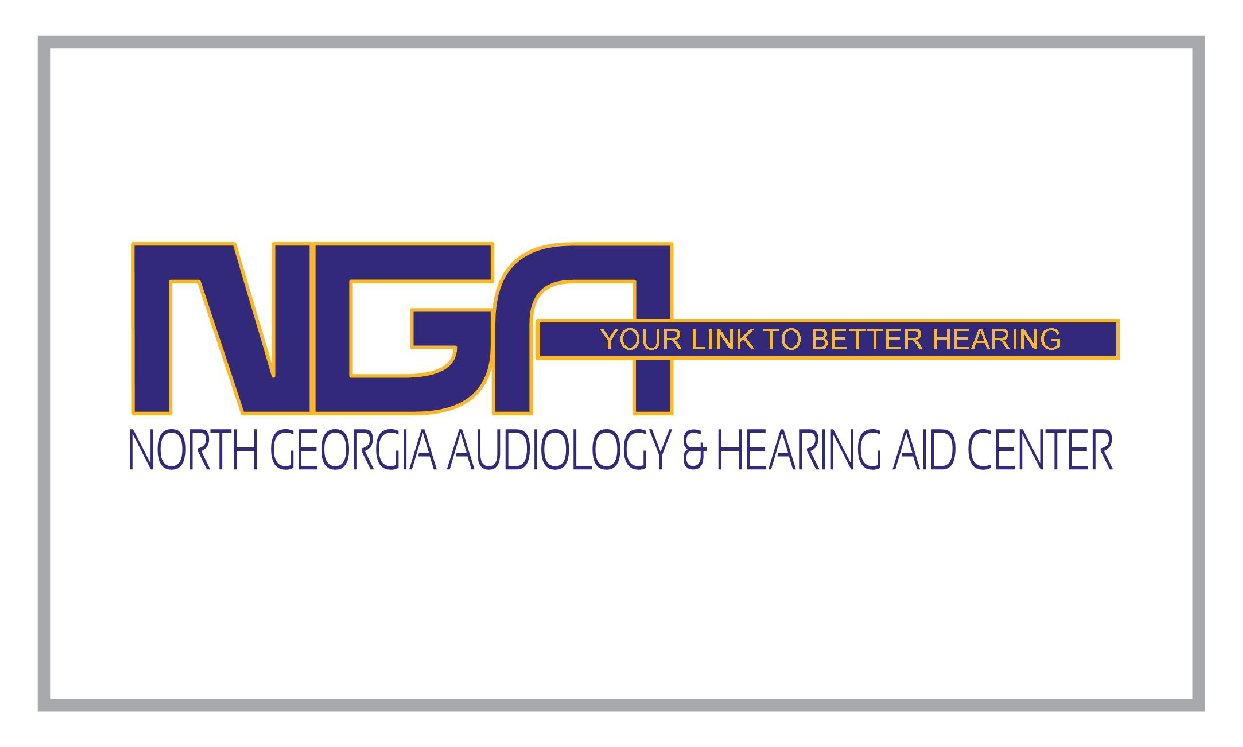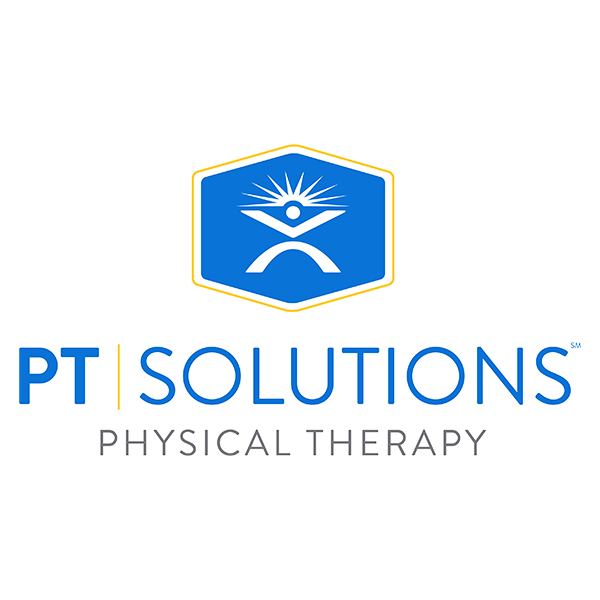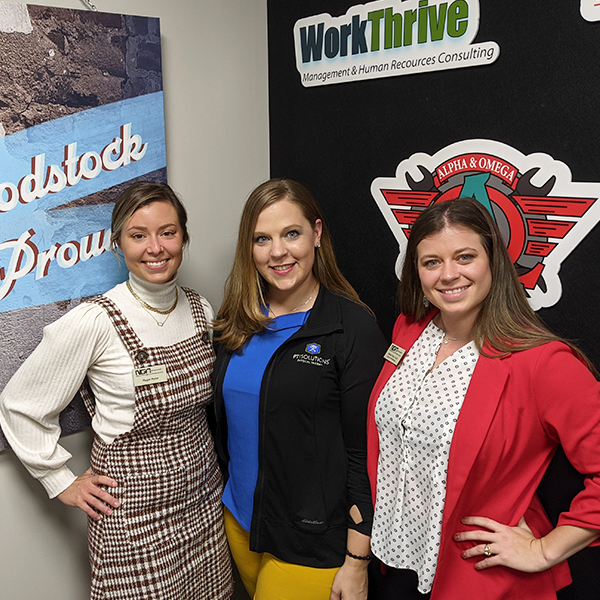
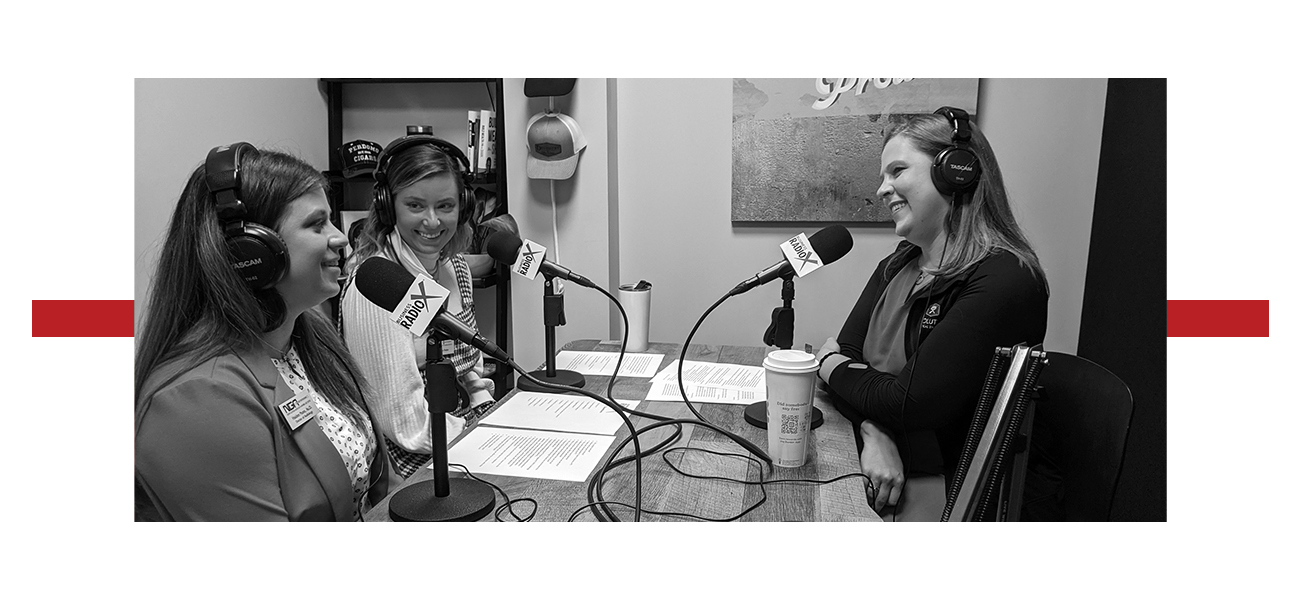
This Episode was brought to you by
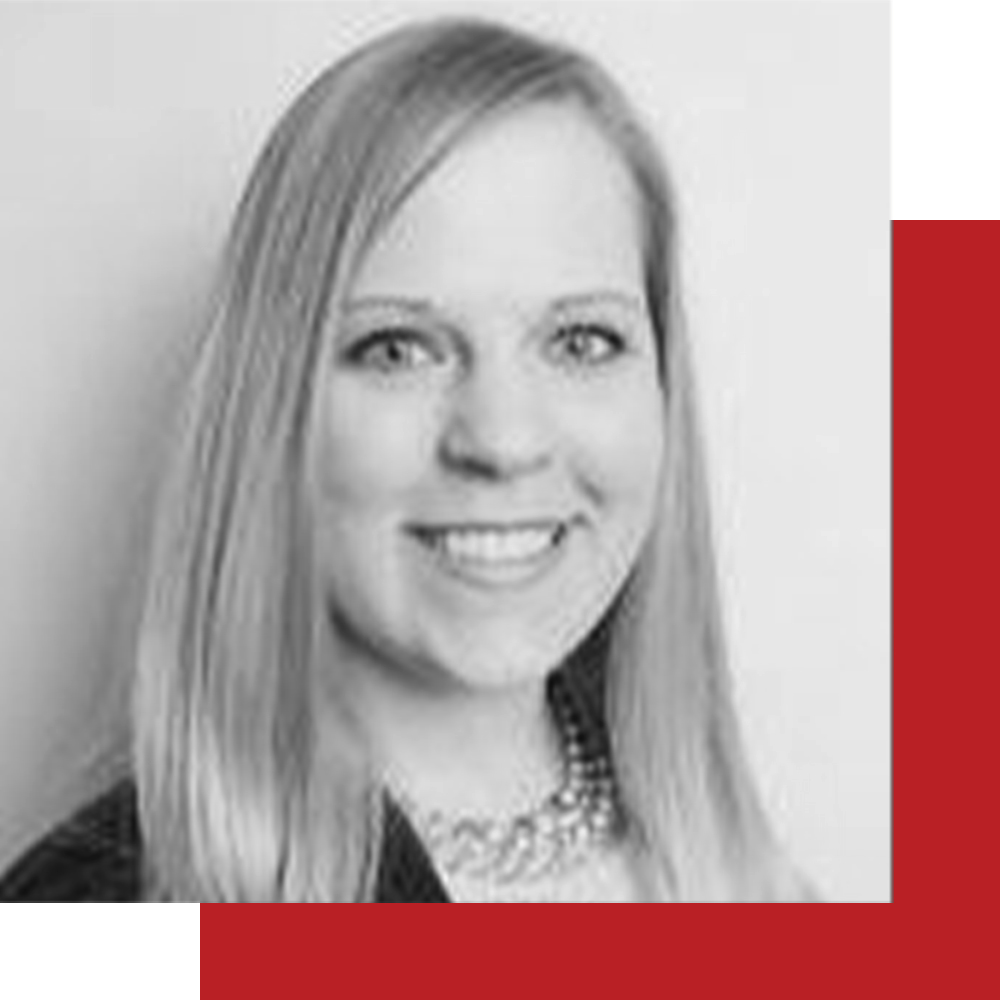 Lauren Weaver DPT, PT Solutions
Lauren Weaver DPT, PT Solutions
Lauren graduated from Georgia State University in 2013 with a Doctorate Degree in Physical Therapy. She joined the PT Solutions team in October of 2019, with 8 years of out patient experience. Lauren received her certification in dry needling, specializing in the treatment of musculoskeletal conditions and trigger points. She excels in treating vertigo, post-operative, and many orthopedic issues. Lauren shows compassion for her patients. Her personal goal is to develop relationships with her patients on a level that helps gain trust and build confidence in the care she provides. You can expect to receive high quality care supported by current evidence-based research at PT Solutions.
 This transcript is machine transcribed by Sonix
This transcript is machine transcribed by Sonix
TRANSCRIPT
Speaker1: [00:00:08] Broadcasting live from the Business RadioX Studios in Woodstock, Georgia. Welcome to women in business where we celebrate influential women making a difference in our community.
Speaker2: [00:00:22] Now here’s your host. Welcome to Cherokee Business Radio. I’m your host, Megan Porter, and I’m here today with Dr. Hayden Nunn and I’m the practice manager for North Georgia Audiology, and Dr. Hayden is our lead audiologist for a Woodstock location. We are so excited to introduce our women and business series, and our objective here is to educate our wonderful community on the allied health professions in the very, very talented and knowledgeable women who run them. And here today is Dr. Lauren Rewear Weaver. My apologies. Dr. Lauren is a physical therapist with pet solutions, and she has so kindly volunteered her time to share with you all the many aspects of her career and how she’s helping make a difference in our community, in health care. So, Dr. Lauren, tell us a little bit about yourself and what you what it is you do daily.
Speaker3: [00:01:15] All right, thank you for having me again. Lauren Weaver. I have my doctorate of physical therapy and I work in an outpatient clinic, so I see a variety of diagnoses and.
Speaker4: [00:01:32] Patients and all kinds of things, all kinds of things, so that’s what
Speaker3: [00:01:36] We get when we’re in outpatient, we see pretty much anything.
Speaker4: [00:01:39] Yeah, so do you work at a hospital setting or are you private practice or practice? Ok, cool. And you just took over that practice, didn’t you? Yes.
Speaker2: [00:01:48] Tell me a little bit about that. That’s exciting.
Speaker3: [00:01:51] Right. So right out of school, I got hired on with a private practice, you know, which was nice. You’ve got a lot of, you know, freedom and it was more relaxed. And so we just got acquired by a larger group, pet solutions. And that’s also been a really great transition as well. We have more goals, more more vision, more leadership, more classes that are offered. So it’s been a really nice transition.
Speaker4: [00:02:16] Oh, that’s nice. So you have the ability to get like education to behind the scenes. So do you have to do continuing education for your job? Yes.
Speaker2: [00:02:26] You know, yeah,
Speaker3: [00:02:26] We have to do about 30 hours every two years. Yeah. Luckily, Pet Solutions offers those in house.
Speaker4: [00:02:33] Oh, that is nice.
Speaker3: [00:02:35] Very nice. They have a residency program as well. So that’s one of the big things that the company strives
Speaker2: [00:02:42] Is that education
Speaker3: [00:02:44] Is it’s something that we really strive to have. A performance based,
Speaker4: [00:02:49] Evidence based practice is important.
Speaker2: [00:02:50] Yeah. So, Dr. Loren, where did you go to school? I know back in the day of physical therapy was a two years master’s program, and now they changed it over to a four year doctorate program. So did you go to the four year program or did you do the master’s?
Speaker3: [00:03:04] So it’s every school now is the doctorate program. So that changed over about 10 15 years ago. So you go and you get your four year undergrad and then you go, and it’s a three year program for the graduate school. So it’s all doctorate now.
Speaker4: [00:03:20] That’s like audiology. Audiology used to be a masters, too. And then we switched over to the doctorate, which I’m glad we did because, you know, I feel like we get a lot more education and we’re able to help the patients a lot more because we have more time to kind of sit and learn the things that we need to learn. Yeah. Where did you go to school? Did you go to Georgia state? Why am I so afraid at first?
Speaker3: [00:03:42] Because that was my last pick.
Speaker4: [00:03:43] Yeah, no.
Speaker3: [00:03:44] But that’s because I didn’t want to deal with going downtown. I know downtown is scary, scary. I mean, it’s scary. It’s right next to Grady. And there’s a
Speaker4: [00:03:53] Lot of I feel like a lot of people would disagree because, you know, downtown is so up and coming now. But I’ve lived in Georgia my whole life, and Atlanta is I’m just not a city girl. I’ve never been one.
Speaker3: [00:04:04] So of course, that’s where I ended up. But then I ended up loving it. It was a great program. I think because we were in the city, we had, you know, Emory and the Shepherd Center and Grady and all these really high end educated people that would come and speak. And so I feel like I got a large
Speaker4: [00:04:22] You got a well-rounded experience. Yeah, that’s nice. And I bet you took a lot of that and apply it now.
Speaker3: [00:04:28] Oh, yeah, absolutely. So like our clinic, that’s in Woodstock, we we see everything like we see from, you know, neck pain to back pain to, you know, accidents and oh, man surgeries.
Speaker4: [00:04:41] Yeah. Walk us through a typical day in the life of Dr. Loren Weaver.
Speaker3: [00:04:45] Ok, well, every day is different, and I think that’s the best thing I love about my job. You know, we do hands on that’s really big in our profession, it’s so important that we touch our patients without touching them. We don’t really know what’s going on, right. One of the biggest things is, Well, don’t you need to see what my scan says? I’m like, No, not really, because I’m putting my hands on you. I can tell you what your scan says, right? So that’s one thing we strive is, you know, get into physical therapy. We can help restore any movement pattern that you might be, you know, having issues with or anything but. Just get your hands on them and feeling what’s going on is that stiffness or or weakness or anything like that, and then we just help restore that.
Speaker4: [00:05:33] So yeah, so every patient is different, right? And you talked a little bit about seeing accident patients and long term pain patients. I bet that’s difficult. How do you manage people who have chronic
Speaker3: [00:05:46] Pain, right? Chronic pain is probably the hardest thing to treat because it’s something that the patient has been dealing with for years or decades sometimes. And over that amount of time, their bodies have changed and adapted and. And they almost are expecting it at that point, you know, they’re they’re looking for that pain, and so having that emotional attachment to that pain is the hardest thing to break. And having that patient recognize like you can work through this, you can get get by it.
Speaker4: [00:06:18] It’s funny because we talked a little bit about this on our last segment, but you don’t realize how much of a therapist you become as well and how much you end up, you know, counseling your patients. And just really, I mean, it makes a difference to just listen. Sometimes they just want to come and talk. Oh yeah, we are.
Speaker3: [00:06:36] Most people’s outing, like especially the older population we are, they are excited to see us. Yeah, they become they’re the best part of their day.
Speaker2: [00:06:43] Yeah. When we had that meeting before the podcast, you mentioned how I am not a massage therapist. Do not come in here and expect me to massage your shoulders and then you walk out. So with that, what is the biggest misconceptions of your physical therapy? And when people walk in, I know you’re like, Yeah, I’m not going to rub your feet like, we’re not going to sit here and you’re going to have a pedicure Stone Payton.
Speaker4: [00:07:08] You rub people’s feet. Yeah.
Speaker3: [00:07:10] No, I mean, that’s so funny. Feet is the my least favorite because I hate feet. But they are also, I think, my funnest to treat to. I don’t know. It’s weird. We love hate like a double edged sword right now. Yeah, that that’s probably one of my biggest pet peeves is when people come. I just want the massage because that makes me feel the best. I’m like, Yeah, but the massage makes you feel good, but that’s not what’s getting you better, right? You know, the exercises, along with the massage, is going to help you get better. I’m like massage therapist. You know, I’m not downgrading them, but they have a certificate and I have a license. And there’s a big difference, big difference.
Speaker4: [00:07:49] I can speak firsthand. I was actually in an accident at the beginning of the year this year, and Dr. Lauren came highly recommended and I went to see you and we talked a lot. I did get the famous massage, but I also had another unique experience with you, and I want you to talk a little bit about this. I’ve never had it done before, but it’s called dry needling and it was really scary. And it sounds just as scary as the name implies. But it was so beneficial after you did that on me. I felt so much better, and of course, I did my homework. I went home and did all the exercises, but the dry needling was very, very unique. I think, to physical therapy.
Speaker2: [00:08:32] I all I can think of dry needling. Is you laying on your stomach and you look like a giant porcupine on the table? Yeah, that’s all I picture.
Speaker4: [00:08:40] So for for the people listening who may be afraid to hear dry needling, tell us a little bit about kind of that, you know, procedure and what goes into that and how you how you kind of stumbled upon dry needling and figured that out?
Speaker3: [00:08:54] Hmm. Well, you have to get certified to do it. So you have to have so many hours of practice. It is invasive, you know, I’m sticking a needle and your muscle. The idea is when you have a trigger point or a knot and your muscle, you put a needle in it and it releases that trigger point. So a lot of times are our muscles. They get locked up a lot of times because of the weakness. They get locked up and they get stuck in its contracted state. And the only way to really release it is by, you know, manually releasing it or the dry needling. So it’s, you know, I probably do it most on the necks and the backs, just because that’s where we hold our attention. It’s where a lot of you know, our pain is. So I’ll stick a needle in those specific muscles that are holding that trigger point. And I’m looking for a twitch response and that is sending signals to your brain to pretty much let go of that contraction and then you accompany it with your exercises and then hopefully that not never comes back.
Speaker4: [00:09:50] Yes, there was a lot of twitching that happened that day.
Speaker2: [00:09:52] Lots of twitching. So you were a twitching porcupine was twitching, but it is very effective.
Speaker4: [00:09:59] So I remember asking you the question to you. You know, what is the difference between this and acupuncture? Because you hear, you know, you hear a lot about acupuncture and the use of needles there. And I know that goes all the way back to Chinese medicine and things like that. But tell me a little bit about the the difference between acupuncture and what you do with dry needling.
Speaker3: [00:10:18] Our goal is completely different than an acupuncture. They’re hitting certain meridian points on your body that they believe aligns your energy. I mean, there’s probably other things that they do that I’m not aware of because I didn’t study it, but I’m going straight to the source. I’m going to the problem area and I’m not using as many needles or that big of an area. I’m really just going to that specific muscle.
Speaker4: [00:10:42] That’s awesome. Yeah. So you don’t just deal with chronic pain and, you know, accidents and things like that. You do a lot with balance too, don’t you?
Speaker3: [00:10:51] Yeah. So balance and vertigo is actually one of my favorites to treat. It’s more fun. You’re more creative. You know, you’re having patients stand on unsteady surface. Says, yeah. Another misconception is the older population, whenever you start to lose your balance or you start falling, they’re like, Oh, my balance is gone and it’s gone, like, No, you can work on it. It’s the same as muscle strengthening. All you got to do is practice it. Put yourself in those situations.
Speaker4: [00:11:21] Yeah, there’s a lot of things that can cause balance issues, right? So as an audiologist, balance is a big part of my practice too. So, you know, I have to figure out. Are you experiencing the crystals in the ear? I get that a lot. I have the crystals in my ear. What’s going on? Or is it truly a a balance weakness that’s going on with your system? And if so, where is it at? Is it your your touch since you know your touch, your eyes, your your ear? What is it? And I know we’ve worked a lot together now, referring patients back and forth, which which I think is nice in the allied health profession. We call that, you know, the interdisciplinary approach because I get to see a patient and then you get to follow up with the patient and vice versa, which I think is really nice. But walk us through. So let’s say you do have a patient that comes in and they’re a little bit off balance. And you know, they they just feel unsteady all the time and they can’t they can’t get their balance and they have to use a walker or a cane, and they’re just really scared of falling. What would be your approach to kind of handling a patient like that?
Speaker3: [00:12:25] Well, first, I want to determine, you know, is it simply just weakness? And just the following factor that one’s an easy one. I’m literally having them stand on one leg and just challenging different balance systems versus, you know, is it truly the crystals in the ears? I don’t like the word crystals.
Speaker2: [00:12:43] I don’t either.
Speaker3: [00:12:45] It’s not like we have diamonds floating around in our head. That’s not what’s happening. So we have like our equilibrium system that’s in our like deeper inner ear. You know, those little particles can come out of alignment and that’s going to cause room spinning dizziness.
Speaker4: [00:13:00] So that’s your true verdict.
Speaker3: [00:13:02] You’re right. When you’re getting out of the bed, you feel like the room is spinning. That’s probably the funnest one to fix because I can fix it in one or two visits. Yeah, it’s so fun and fast. And if I could you in mind day
Speaker2: [00:13:15] Not so fun for the patient, but
Speaker3: [00:13:17] Because I get you spinning and I’ve been thrown up on a few
Speaker2: [00:13:20] Times. But it’s an intense
Speaker3: [00:13:23] Process, but it’s very effective. Right? Love treating that. So determining if it’s that versus some people, if it’s just blood pressure regulations, and that’s when you feel
Speaker2: [00:13:33] Dizzy, like I feel
Speaker3: [00:13:34] Woozy, those can be other things or maybe some neurological issues going on. And then I would refer them to a neurologist.
Speaker4: [00:13:42] Yeah. So again, there’s that, you know, interdisciplinary approach. You’re making sure that patients getting the best care.
Speaker3: [00:13:48] I know we had one patient. He was sent to me for vertigo, for the room spinning crystal vertigo. And I treated him and just something wasn’t right and I treated his neck and still wasn’t right. So I sent him to you, Dr. Hayden. Guess what?
Speaker2: [00:14:04] He needed hearing aids and that fix that. Yeah, he’s doing great.
Speaker4: [00:14:09] Yeah, no. Thank you for the referral, by the way. Yeah. So it’s important. It’s important that we keep in constant communication, especially with balance, since we’re we’re both so linked with that. But tell me, so balance is fun. Chronic pain was your heart is what has been. Tell us a story about one of your favorite experiences that you had or the most unique patient you’ve seen and kind of had to treat.
Speaker3: [00:14:33] Yeah. So my favorite patient. So her name is Amanda and I have a release to be able
Speaker2: [00:14:39] To talk about.
Speaker4: [00:14:40] Ok, hip is important now.
Speaker3: [00:14:42] It’s important, but you know, she signed a release. So I’ve written stories about her and she’s been in like the little Woodstock magazine. So that’s awesome. I know. So she she’s in her late 20s and about four or five years ago, she had a brain aneurysm about two weeks after her wedding.
Speaker4: [00:14:59] Oh no, yeah. So is a
Speaker3: [00:15:00] Really significant one. She was, you know, in the hospital for months at the Shepherd Center for months. So I got her. I think it was a little less than a year or so after the aneurysm and we were working on just transfers, getting her from her wheelchair to the table. Oh, how traumatic. And that’s what we worked on. But her family was there through everything her husband stuck by her. He still sticking by her like, it’s the most precious story, and I love her. And so she comes and goes, you know, off the schedule. And so every year I treat her and we have new goals. So this last time we worked on walking, I mean, she’s still you can look at her and tell that something’s not right, but we’re more working on normalizing her, her walking. We worked on jumping.
Speaker4: [00:15:45] Oh, fun.
Speaker3: [00:15:45] So I think it’s just so fun because it’s like, Well, let’s get creative. And how can we use you? Yeah, get you in in different positions and just have fun with it.
Speaker4: [00:15:55] Oh, I couldn’t imagine right after her wedding. Oh man. But hey, she’s got you. So I know it’s important. Come a long way. Yeah. Now you guys also have something unique to your practice to tell us a little bit about Izzy.
Speaker3: [00:16:09] Izzy is our therapy dog, so she just turned four years old. She is a miniature Australian shepherd,
Speaker2: [00:16:15] And she’s so
Speaker3: [00:16:16] Cute. She’s so cute and she’s precious. So what she does is she’s really more of a comfort dog. She’s not. Like certified in therapy dog, because that takes thousands of dollars. Mm hmm. All I really wanted her to do is to just be there at our office, so we got her trained and got her certified. So she’s our door greeter, so she will. You walk through the door and she’ll come say, Hey, we’ll use her like, say you’re in a lot of pain. We’ll get her up on the table with you and she’ll just be there for you so the patient can just pet her and hold her. Or we’ll use her with exercises. Yeah. And she’s a good distraction.
Speaker4: [00:16:54] So really is the first time I walked into the office. I was a little nervous because, you know, I never really met you. But I’ve heard a lot about you and and I was in a lot of pain. And as he just came right over and sat right beside me on the chair and she just sat there and I was like, Oh, you’re so precious, I love you. Yeah. So I think having an office dog like that would be something that would be really fun.
Speaker3: [00:17:17] Now we’re trying to get Hayden to get one, too.
Speaker4: [00:17:19] I’m trying.
Speaker2: [00:17:22] Steve was ordered shut out an office dog.
Speaker4: [00:17:27] Ok, well, that’s that’s really cool. I, you know, you don’t really see a lot of office dogs, but it’s becoming more and more popular. We’ve been to a few ribbon cuttings in the area because we try to we try to promote Woodstock and show our face when we can and be supportive of other businesses. Which is one of the reasons why we are having you here today is to kind of give you an opportunity to share about your business. But we did go to a few ribbon cuttings and we saw some office dogs there and they were all dressed up and their little bow ties and and little hats. And I was just like, Oh, this is great.
Speaker2: [00:17:59] I love it. I would love an office dog or an office pig. You know, an office pig. I don’t know about an office pick. Hey, guys.
Speaker4: [00:18:11] Yeah, that might be a little weird. I don’t know.
Speaker2: [00:18:13] I don’t know how patients would feel about that.
Speaker4: [00:18:16] So how do your patients feel about the dog?
Speaker3: [00:18:18] Most people love her, and we have quite a few people that schedule on her schedule. She doesn’t come every day,
Speaker2: [00:18:23] So she has her own schedule.
Speaker3: [00:18:25] Yeah, she comes. That’s amazing. She comes on Wednesdays and Fridays, so we’ll have people schedule on those days just
Speaker4: [00:18:32] Just to be with her. Oh, I bet it goes so far with them too. It does. Oh, that’s amazing.
Speaker2: [00:18:40] I’m I’m. I’m sorry. I’m still picturing an office pig stuck now. Ok, so let’s change the subject a
Speaker4: [00:18:48] Little bit when we talk about access for patients. I know in the field of audiology, one of the things we struggle with is is our Medicare patients having direct access to come to us. That’s probably the biggest challenge that we face. So if you are a Medicare patient, your test will be covered annually with us. But the problem is you have to go get a physician’s order to be able to come and see us. So we’re lacking kind of that direct access, and I think it holds a lot of people back, unfortunately, and and we’re fighting it every year. But, you know, until Medicare changes their perspective on on our profession, I don’t think that’s going anywhere anytime soon. Do you have any problems that you face like that in your career? Tell me a little bit about that. Yeah.
Speaker3: [00:19:31] So we also have that issue with the Medicare, so we need the doctor’s referral. But most other insurances, we do have direct access, but that’s limited in the state of Georgia. So you can come to physical therapist for about three weeks without a referral. Ok, and we can treat you for that. Unfortunately, a lot of times our plans of Care’s run around six to eight weeks. So if you truly want to get to wellness, you have to put in the time, you know, to truly fix the issue that’s going on. So three weeks is like a little teaser, so right. We’re also working on that legislatively as well.
Speaker2: [00:20:10] We pay the lobbyist right thing lobbyist. I know.
Speaker4: [00:20:14] Yeah. Medicare’s got some tight restrictions, that’s for sure. It’s great for a lot of things. But man, when it comes to our professions, I think we’re we’re one of the only two still that have to have that direct physician’s order for Medicare to come and see us right.
Speaker3: [00:20:27] And we also have a cap on how much they’ll offer. So it’s a money amount. So they give you about like $2000, three thousand if we can prove it’s, you know, medically necessary, but you have that for the whole year. So say a patient gets a knee replacement. We’ve pretty much exhausted their whole benefit for the year. So, you know, we make sure that we’re really mindful to not exhaust somebodies will benefit as well because we would hate to leave them a half of a year and then they go break a hip and they have nothing left. So we’re mindful of that and that’s important across the board, something you have.
Speaker4: [00:21:03] Yeah, you have to have that conversation up front and just be like, Listen, I want to give you the best care and I want you to have a good quality of life. But this is where we’re limited and that’s that’s unfortunate. Ok, so what? Speaking of that, if you run out of the funds or, you know, if the patients are are restricted, is there anything that you can teach them that they can work on at home? So they don’t have to come to the office, do you guys do any kind of at home therapies or things like that?
Speaker3: [00:21:30] Well, we always provide them with a home exercise program from day one, so there’s always going to be something that you’re going to be working on. So to truly see benefit from physical therapy as you’ve got to put in the work and that’s doing something every day, whether it’s a few stretches or strengthening or just, you know, focusing on posture. So whatever the issue is, you’ve got to put the work in to truly get the benefit out. So if we do have a restriction or, you know, certain insurance, you know, they need authorization. So they also are limited as well. We’re just going to make sure that you fully understand what you’re working on on your own or, you know, we would change you to self-pay if you truly needed more. We could offer that right.
Speaker4: [00:22:10] What is the most rewarding part of your job
Speaker3: [00:22:13] Seeing the progress that is the most fun? Like this morning, I had a couple of the ladies they’ve just been dealing with, you know, the low back and the hip arthritis and all that. And they both came in this morning like, I feel great. I did. I did everything I wanted to do yesterday and I had no limitations and it feels so good. So when you get to back to back like that, it really is a good day. It’s a good day. Rewarding.
Speaker4: [00:22:39] Yeah, not one five of them come in at the same time, though, right?
Speaker2: [00:22:42] Right. Yeah.
Speaker3: [00:22:43] Are they’re all at the same time?
Speaker4: [00:22:46] Yeah. But before we were talking about how she saw patients this morning and there were five that showed up at the exact same time,
Speaker2: [00:22:53] A little stressful. I got through it. You bouncing back and forth like a pinball machine, right?
Speaker4: [00:22:59] Ok, so what are some of the things that you have grown with through your job, so mistakes you’ve made and learned over time or not? Not so much mistakes, but just
Speaker3: [00:23:11] Don’t make
Speaker4: [00:23:11] Mistakes? Yeah, no, no, no. But you know, you learn as you go, I think and that’s true for me to especially with my my balance, patience and my tinnitus patients, the ones that have the ringing in the ears that is case by case scenario. So it’s been I’ve learned a lot as I’ve gone, but there’s been some challenges along the way too, and I’m sure you’ve experienced that. So what are some things that you’ve had to overcome?
Speaker3: [00:23:39] I think the well, the biggest thing is, of course, my manual skills are getting better and better with time. So the more I touch the patients, the more
Speaker4: [00:23:47] I know those massages, right? You have become a good masseuse.
Speaker3: [00:23:53] I have. But I think what I also learned is I I can’t help everybody, right, you know, there are still going to be those people that aren’t ready to help themselves. They are self-limiting. Some of those people or even they don’t care to get out of the pain. I mean, I don’t understand that, but there is a number of people that want to be in pain. They want that attention.
Speaker4: [00:24:15] We see that too. Isn’t that interesting? Yeah, it’s hard.
Speaker3: [00:24:19] So knowing that I’m not going to help everybody, but I might be that one person that planted a seed and maybe the next person they’ll hear. Yeah, I had to learn that right away because I thought coming out of school, I’m going to change the world and I can help everybody, but I can’t. But that is my goal.
Speaker4: [00:24:37] That’s I think that’s everybody’s goal now. Yeah, I have to talk about that with my patients, too. Like the more you put in, the better you’ll do. You have to be aggressive. I can only do so much, so I completely understand where you’re coming from. Ok, let’s see. Do you find inspiration from the people you work with or do you have any mentors that you’ve worked with that that are special to you that have kind of helped shape who you are?
Speaker3: [00:25:06] Yeah. So the first person I think that comes to mind is, you know, my previous boss, the one who owned the clinic before we were acquired. So he still does work with us. His name is Joe Cafferty. He’s pretty popular around Woodstock. He’s funny. He is a jokester. He’s fun. He makes work fun. But being able to work with him right out of school like he has his manual certification. So he’s the one that really taught me my manual skills. He taught me how to be compassionate and just love on the patients all the time. That’s really what gets people better. Is them showing that you care and that you’re doing everything that you can to get them better. It might not always be the right exercise or the right skill, but if they know you’re trying and you’re doing your best, then that’s the best you can do. And they’re going to know that and they’re going to come back to you.
Speaker4: [00:26:01] Good teachers make good teachers, right? Lauren, you’re you are a mentor to other to other students, right? Don’t you have interns?
Speaker3: [00:26:11] And now I have interns and I. Yeah.
Speaker4: [00:26:13] So look, it’s an ever evolving wheel. Yep. Yeah. Do you like having a student?
Speaker3: [00:26:19] I do. Students are the funnest. Plus, I give them all my work. Yeah, that’s great.
Speaker2: [00:26:24] Yeah.
Speaker4: [00:26:25] They can write your reports, right? I hate writing
Speaker3: [00:26:28] Reports.
Speaker2: [00:26:28] Dr.. And I need a student. I know me too, man.
Speaker4: [00:26:33] Well, that’s awesome. Listen, I’m going to send it over to Megan to ask you a few more follow up questions.
Speaker2: [00:26:39] Ok, so I know we were talking about advice for patients so leaving here today. What is the biggest piece of advice you want our audience to take away? Mm hmm.
Speaker3: [00:26:50] The biggest thing is just to keep moving and keep focusing on strengthening. So as we age our our muscle strength decreases about three to eight percent per decade after the age of 30. So we just need to be more proactive on working on loading our muscles so we don’t have pain when we age. Work on your posture. Get up often.
Speaker4: [00:27:12] This is a common theme. I know I’m
Speaker2: [00:27:14] Straight. I’m like, Oh man, slouching
Speaker3: [00:27:16] This, you know, really being mindful about how you move. It’s it’s important. And then the earlier you seek help, when you have pain, the quicker the recovery. Is it going to be, right?
Speaker2: [00:27:26] Ok, well, how would someone contact you?
Speaker3: [00:27:30] So I work at the Woodstock East location, so the best way, you know, just give us a phone call and our front office staff is more than happy to help you and guide you. And if we need to get a referral, we can also help with that.
Speaker4: [00:27:47] Yeah, I’ve met your front office staff and they’re great. They’re very friendly.
Speaker2: [00:27:52] So what is a good phone number to reach you?
Speaker3: [00:27:54] So it’s six seven eight four four five nine seven nine nine.
Speaker4: [00:27:58] Awesome. And do you guys have a website?
Speaker3: [00:28:01] Pet Solutions dot
Speaker2: [00:28:03] Com. Ok, great. Yeah, yeah.
Speaker4: [00:28:05] You guys are pretty big. So yeah, when you grow in practice, I’ve been on the website a few times. So when you go to the website, you do have to search for location. So you just hit the dropdown menu and hit Woodstock and then you pop right
Speaker3: [00:28:17] Up Woodstock East. So we have a Woodstock Woodstock East and we have a trick on location. So those are all the Woodstock locations. That’s good for you in Canton as well.
Speaker2: [00:28:25] That’s great. Well, thank you so much for joining us today, Dr. Lauren, and thank you for everyone for listening or taking the time out of your day to listen to our women in business series. Again, I’m Megan Porter, and this is Dr. Hayden Nunn with North Georgia Audiology. And until next time have the very, very best day.
